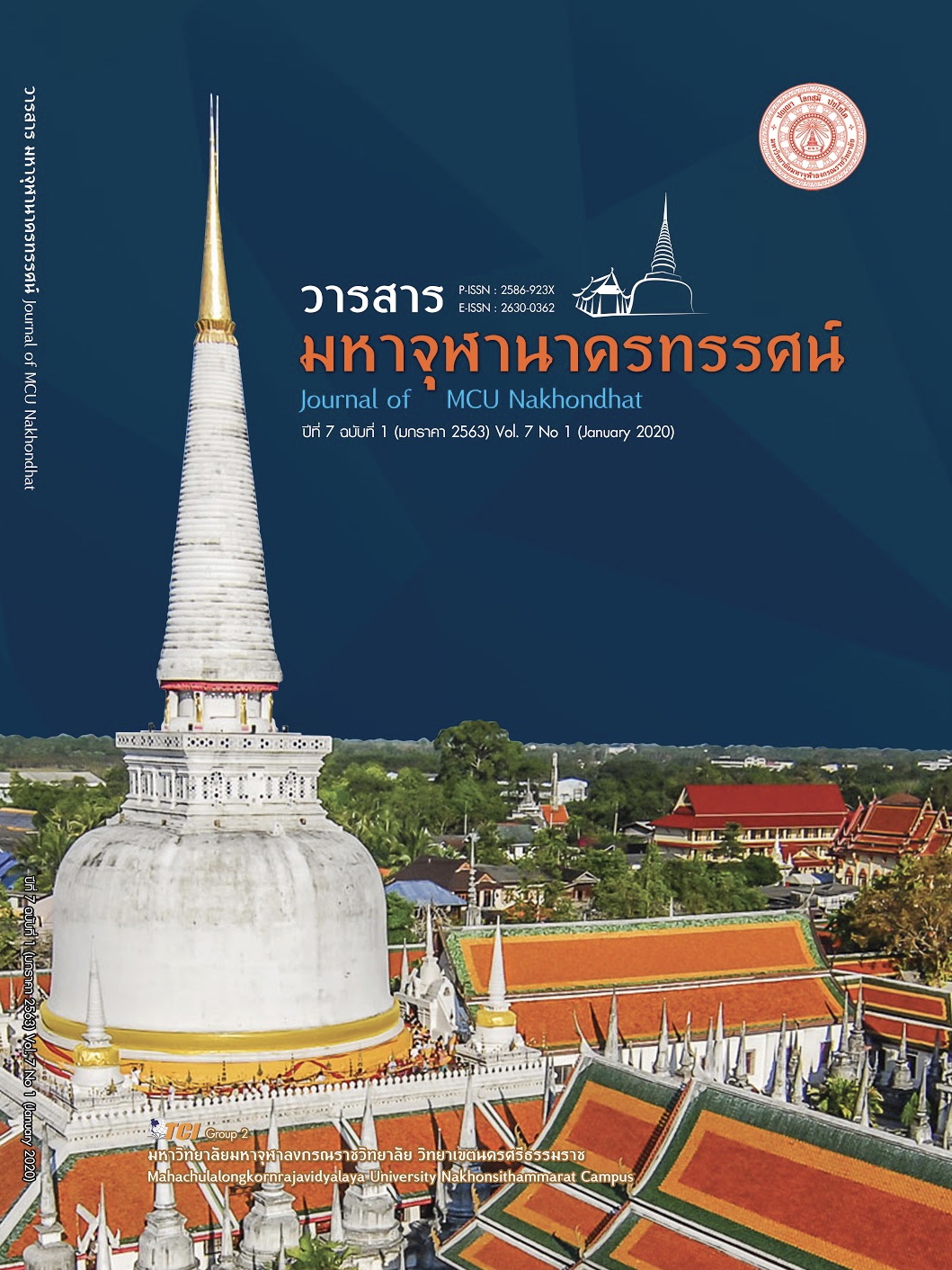AN APPLICATION OF PRINCIPLE OF SÃRÃNĨYADHAMMA INTO THE PROMOTION OF LIVING TOGETHER OF THUNGLA-ONG COMMUNITY, BANGWAN SUB-DISTRICT, GURABURI DISTRICT, PANG-NGA PROVINCE
Main Article Content
Abstract
In the research, it was found that living together is of essential existence, that is, it shows the uniqueness of man or group of people where certain culture and tradition could be purposely cultivated and passed to the next generation whereby they could be utilized in daily life, such as, the acceptance of ways of life, It is strongly believed that the principle of Sãrãnĩyadhamma is purposely assigned to remind people of how beneficial the uniqueness of a community is; such a principle make people love one another and have mutual understanding while living together where harmonious and helpful support of one another would be gradually made. Under this situation, people will not seek any violence. Instead they come to realize the most beautiful value of living together through mindfulness. it is necessary for a community to apply the principle of Sãrãnĩyadhamma into the improvement of the quality of life in all systems of faculty through the propagation of virtues by which one achieves the quality of life; one should persuade the community’s fellows in the level of family, community and society to follow the aforesaid principle where the immunity would be brought back to the pluralism of society in postmodern period. Apart from this, one should have positive attitude towards public, that is, once rightly gained certain property, it should be divided in a proper way, one should avoid association with those who could bring him bad thing, and one should associate with those who have the same agreement on good conduct in act, word and mind. Based on these ways of living life, the long term benefit would be brought about to both oneself and society as a whole.
Article Details
References
พรอุษา ประสงควรรณะ. (2556). การศึกษาชุมชนต้นแบบต่างศาสนาที่อยู่ร่วมกันอย่างสันติ ในแขวงวัดกัลป์ยาณ์ เขตมีนบุรี กรุงเทพมหานคร. ใน วิทยานิพนธ์พุทธศาสตรมหาบัณฑิต สาขาวิชาการพัฒนาสังคม. มหาวิทยาลัยจุฬาลงกรณ์ราชวิทยาลัย.
พระครูนนทวีรวัฒน์ วีรธมฺโม (มีนุสรณ์). (2553). การบริหารงานเทศบาลตําบลตามหลักสาราณียธรรม 6 : กรณีศึกษาเทศบาลตำบลปลายบาง อำเภอบางกรวย จังหวัดนนทบุรี. ใน วิทยานิพนธ์พุทธศาสตรมหาบัณฑิต สาขาวิชาการจัดการเชิงพุทธ. มหาวิทยาลัยมหาจุฬาลงกรณราชวิทยาลัย.
พุทธทาสภิกขุ. (2531). สันติภาพของโลก. สุราษฎร์ธานี: ธรรมทานมูลนิธิ.
มหาจุฬาลงกรณราชวิทยาลัย. (2539). พระไตรปิฏกภาษาไทย ฉบับมหาจุฬาลงกรณราชวิทยาลัย. กรุงเทพมหานคร: โรงพิมพ์มหาจุฬาลงกรณราชวิทยาลัย.
สนธยา พลศรี. (2547). ทฤษฎีและหลักการพัฒนาชุมชน. (พิมพ์ครั้งที่ 5), กรุงเทพมหานคร : โอเดียน สโตร์.
สุริยันต์ สุวรรณราช. (2551). ปัจจัยส่งเสริมการอยู่ร่วมกันอย่างสันติวิธีของไทยพุทธมุสลิม ในจังหวัดสตูล. ใน รายงานวิจัย. มหาวิทยาลัยราชภัฎนครศรีธรรมราช.
สุไรยา วานิ และมะรอนิง สาแลมิง. (2557). การอยู่ร่วมกันของชุมชนในสังคมพหุวัฒนธรรม กรณีศึกษา ตำบลทรายขาว อำเภอโคกโพธิ์ จังหวัดปัตตานี. ใน วิทยานิพนธ์ศิลปศาสตรมหาบัณฑิต สาขาวิชาการบริหารการพัฒนาสังคม หลักสูตรปกติ. มหาวิทยาลัยสงขลานครินทร์.


